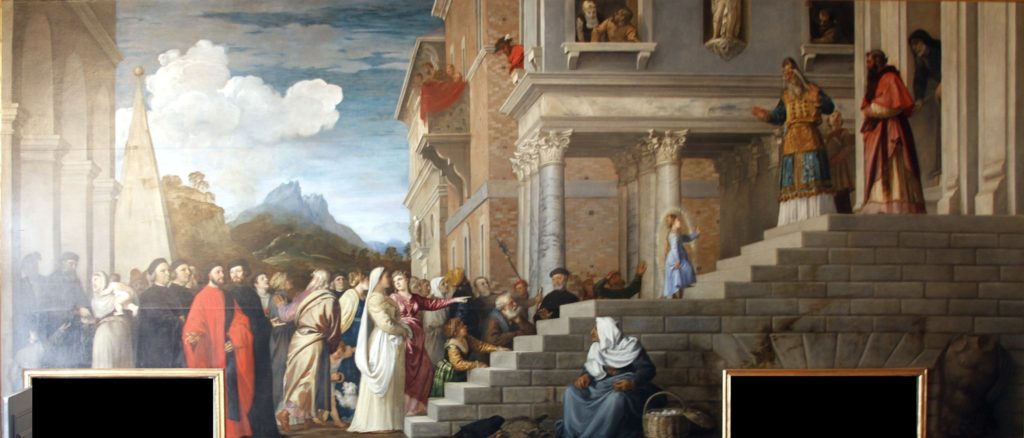Feast of Presentation of Blessed Virgin Mary
Its Origin and Meaning

Father Aejandro Vazquez Dodero, Ph.D. in Canon Law, offers this article in which he explains the origin and meaning of the Feast of the Presentation of the Virgin Mary.
The Feast’s Origin
Every November 21, the Church celebrates the ancient and pious feast of the Presentation of Mary in the Temple.
Its origin is found in James’ Proto-Gospel — a 2nd-century apocryphal writing, which tells how the Virgin was taken as a child by her parents — Saint Joachim and Saint Anne — to the Temple in Jerusalem, and left there for a time, to be instructed in religion and all that related to that God whom their daughter already talked with and loved. It’s important to remember the meaning of “apocryphal,” which doesn’t belong to the canon of books inspired by God, without excluding that some of those apocryphal reports merit credibility.
In the mid 6th century the church of Saint Mary the New was consecrated in Jerusalem, which gave place to the genesis of this celebration. Years later, at the height of the Middle Ages, this celebration was instituted in the Western Church.
The Meaning of This Commemoration
Our Lady’s life among us unfolded humbly and without calling attention, which the Holy Gospels confirm, as they abstain from telling any episode of Her childhood and youth until the moment of the Annunciation.
Perhaps that’s why Tradition — or popular piety — would venture to describe certain evens of Her life from Her girlhood, inspired in several passages of the Old and New Testament, which would eventually be taken up by Christian spirituality and art, in its more extensive meaning.
Among other episodes of that childhood, we have that which refers to the Presentation of the Virgin, or the Offering of Mary by Her parents in the Temple of Jerusalem. An event, of course, that reminds us of the later presentation that Mary and Joseph did of the Child Jesus to God the Father (cf. Luke 2:22-38).
The essence of this celebration is found in the fact that, in Her perfection and virtue, the Virgin was “made for God,” hence Her parents’ offering in the Temple. In Her maturing process, until He was ready and prepared to receive the divine disposition to be the Mother of God, the episode we are concerned with implied what would be a major event in her life.
We can imagine Her praying, as artistic works have often represented Her as, in addition to knowing the Sacred Scriptures profoundly, She was, above all, very enamored of God. We also imagine her conversing and talking with great naturalness and affection to those around Her during those days in the Temple and taking care of the details. How well those would feel who accompanied the Virgin, attracted by Her great beauty and virtue!
Father Alejandro Vazquez Dodero
Doctor in Canon Law
Translation by Virginia M. Forrester
Related

The Five (5) “C’s” of PonCe
Exaudi Staff
04 April, 2025
4 min

The Lies of Love: Debunking Myths and Rediscovering the True Meaning of Love
José María Contreras
04 April, 2025
1 min

Family and Mental Health: Parents’ Secret Superpower for Raising Happy Children
Laetare
04 April, 2025
3 min

Cardinal Arizmendi: Let Money Not Rule Us
Felipe Arizmendi
03 April, 2025
4 min
 (EN)
(EN)
 (ES)
(ES)
 (IT)
(IT)

